- Home
- Orhan Pamuk
My Name Is Red Page 38
My Name Is Red Read online
Page 38
I removed one of the notebooks of forms that I kept hidden from the eyes of the world. This is where I secretly made copies of the most beautiful illustrations that I’d seen over the years. Not to mention the copies that the chief of the dwarfs, Jafer, in the treasury would make of the best trees, dragons, birds, hunters and warriors from the pages of volumes locked away; that is, if you gave him ten gold pieces, the rogue. My notebook is excellent, not for those who want to see the actual world in which they live through pictures and decoration, but for those who want to recall the fables of old.
Flipping through the pages while showing the images to the pageboy, I selected the best of the horses. I briskly poked holes over the lines of that picture with a needle. Next, I placed a clean sheet of paper under the stencil. I gradually sprinkled a liberal amount of coal dust on top, then shook it so the dust would pass through the holes. I lifted the stencil. The coal dust, dot by dot, had transferred the beautiful horse’s entire shape to the sheet below. It was a pleasure to behold.
I grabbed my pen. With an inspiration that suddenly welled up within me, I elegantly connected the dots with quick and decisive strokes, such that as I was drawing the horse’s belly, graceful neck, nose and rump, I lovingly felt the horse within me. “There it is,” I said. “The world’s most beautiful horse. Not one of those fools could draw this.”
So the boy from the palace would believe this as well, and so he wouldn’t explain to Our Sultan how I’d been inspired to draw this picture, I gave him three more counterfeit coins. I implied that I would give him even more if I ended up winning the gold. Furthermore, he also imagined, I believe, that he might soon be able to catch sight of my wife once again, whom he’d leered at open-mouthed. There are many who believe you can tell a good miniaturist by the horse he draws; however, to be the best miniaturist, it’s not enough to make the best horse, you must also convince Our Sultan and His circle of sycophants that you are indeed the best miniaturist.
When I draw a magnificent horse, I am who I am, nothing more.
FOURTY-SIX
I WILL BE CALLED A MURDERER
Were you able to determine who I am from the way I sketched a horse?
As soon as I heard I was invited to make a horse, I knew this was no competition: They wanted to catch me through my illustration. I’m perfectly aware that the horse sketches I’d drawn on rough paper were found on poor Elegant Effendi’s body. But I have no fault or style by which they might discover me through the horses I’ve made. Though I was as certain of this as I could be, I was in a panic while rendering the horse. Had I done something incriminating when I made the horse for Enishte? I had to depict a new horse this time. I thought of completely different things. I “restrained” myself and became another.
But who am I? Am I an artist who would suppress the masterpieces I was capable of in order to fit the style of the workshop or an artist who would one day triumphantly depict the horse deep within himself?
Suddenly and with terror, I felt the existence of that triumphant miniaturist within me. It was as if I were being watched by another soul, and, in short, I was ashamed.
I quickly knew that I wouldn’t be able to remain at home, and bolting outside, I walked briskly down the darkened streets. As Sheikh Osman Baba wrote in his Lives of the Saints, in order for a genuine wandering dervish to escape the devil within, he must roam his entire life without remaining anywhere too long. After roaming from city to city for sixty-seven years, he tired of running and surrendered to the Devil. This is the age when master miniaturists attain blindness, or the darkness of Allah, the age when they involuntarily achieve a style, while freeing themselves of all intimations of style.
I wandered through the Chicken-Sellers Market in Bayazid, through the empty square of the slave market, amid the pleasant aromas of soup and pudding shops, as if searching. I passed the closed doors of barbershops, clothes pressers, an old bread baker who was counting his money and looking at me in surprise; I passed a grocer’s shop smelling of pickles and salted fish, and since my eyes were taken only by colors, I walked into a herbs and notions shop where something was being weighed, and in the light of a lamp, stared passionately, the way one looks at one’s beloved, at the sacks of coffee, ginger, saffron and cinnamon, the colorful cans of gum mastic, the aniseed whose scent wafted from the counter, and at mounds of brown and black cumin. Sometimes I want to put everything into my mouth; sometimes I want to fill a page with a picture of all creation.
I walked into the place where I’d filled my stomach twice before in the last week, which I’d personally named the “soup kitchen of the downtrodden” — actually, of the “miserable” would’ve been more appropriate. It was open until midnight to those who knew about it. Inside were a few unfortunates dressed like horse thieves or like men who’d escaped the gallows; a couple of pathetic characters whose sorrow and hopelessness caused their sights to slip from this world to distant paradises, as happens with opium addicts; two beggars who were at pains to follow even basic guild etiquette; and a young gentleman who’d seated himself in a corner at a distance from this crowd. I gave the Aleppan cook a graceful greeting. Heaping the meat-filled cabbage dolma into my bowl, I covered it with yogurt and topped it off with handfuls of hot red pepper flakes before taking a seat beside the young gentleman.
Every night a sorrow overwhelms me, a misery descends upon me. Oh, my brothers, my dear brothers, we’re being poisoned, we’re rotting, dying, we’re exhausting ourselves as we live, we’ve sunk up to our necks in misery…Some nights, I dream that he emerges from the well and comes after me, but I know we’ve buried him deeply beneath plenty of earth. He couldn’t possibly rise from the grave.
The gentleman, who I thought had buried his nose in his soup and forgotten the whole world, opened the door to a conversation. Was this a sign from Allah? “Yes,” I answered, “they’ve ground the meat to the right consistency, my stuffed cabbage is quite to my liking.” I asked about him: He’d recently graduated from a miserable twenty-coin college and been taken into Arifi Pasha’s patronage as a clerk. I didn’t ask him why, at this hour of the night, he wasn’t at the Pasha’s estate, at the mosque or at home in the arms of his beloved wife, but chose instead to be at this street kitchen teeming with unmarried thugs. He asked me where I’d come from and who I was. I thought for a moment.
“My name is Bihzad. I’ve come from Herat and Tabriz. I’ve painted the most magnificent pictures, the most incredible masterpieces. In Persia and Arabia, in every Muslim book arts workshop where illustrations are made, they’ve said this about me for hundreds of years: It looks real, just like the work of Bihzad.”
Of course, this isn’t the issue. My paintings reveal what the mind, not the eye, sees. But painting, as you know quite well, is a feast for the eyes. If you combine these two thoughts, my world will emerge. That is:
ALIF:
Painting brings to life what the mind sees, as a feast for the eyes.
LAM:
What the eye sees in the world enters the painting to the degree that it serves the mind.
MIM:
Consequently, beauty is the eye discovering in our world what the mind already knows.
Did the graduate of the miserable college understand this logic, which I’d extracted with lightning inspiration from the depths of my soul? Not at all. Why? Because, though you’ve spent three years seated at the foot of a hoja who gives lessons in an out-of-the-way neighborhood religious school for twenty silver coins a day — today you can buy twenty loaves of bread with that amount — you still wouldn’t know who the hell Bihzad was. It was obvious that the twenty-coin Hoja Effendi didn’t know who Bihzad was either. All right then, let me explain. I said:
“I’ve painted everything, absolutely everything: Our Prophet at the mosque before the green prayer niche seated together with his four caliphs; in another book, the Apostle and Prophet of God ascending the seven heavens on the night of the Ascension; Alexander on his way to China banging on the d
rum of a seaside temple to scare off a monster stirring up the ocean with storms; a masturbating sultan spying on the beauties of his harem swimming naked in his pool while listening to a lute; a young wrestler sure of victory after learning all his mentor’s moves, only to be defeated in the presence of the Sultan at the hands of his mentor who had yet one last trick up his sleeve; Leyla and Mejnun as children kneeling in a schoolroom with exquisitely decorated walls, falling in love while reciting the Glorious Koran; the inability of lovers, from the most embarrassed to the most crass, to look at each other; the stone by stone construction of palaces; the punishment by torture of the guilty; the flight of eagles; playful rabbits; treacherous tigers; cypress and plane trees that held magpies; Death; competing poets; feasts to commemorate victory; and men like you who see nothing but the soup before them.”
The reserved clerk was no longer afraid, he even found me entertaining and was smiling.
“Your Hoja Effendi must’ve had you read this, you’ll know it,” I continued. “There’s a story I love from Sadi’s Garden. You know the one, King Darius becomes separated from the crowd during a hunt and goes off to roam the hills. Unexpectedly, a dangerous-looking stranger with a goatee appears before him. The king falls into a panic and reaches for the bow on his horse, whereupon the man begs, “My king, hold off from shooting your arrow. How is it that you haven’t recognized me? Am I not the loyal groom to whom you’ve entrusted a hundred horses and foals? How many times have we seen each other? I know each of your hundred horses by temperament and disposition, nay, by color even. So then, how is it you pay no attention to us, the servants under your command, even those like myself whom you encounter with such frequency?”
When I depict this scene, I render the black, chestnut and white horses — so tenderly cared for by the groom in a heavenly green pasture covered with flowers of every imaginable color — with such happiness and calm that even the dullest of readers would understand the moral of Sadi’s story: The beauty and mystery of this world only emerges through affection, attention, interest and compassion; if you want to live in that paradise where happy mares and stallions live, open your eyes wide and actually see this world by attending to its colors, details and irony.
This progeny of the twenty-coin hoja was at once entertained and frightened by me. He wanted to drop his spoon and flee, but I didn’t give him the chance.
“This is how the master of masters Bihzad depicted the king, his groom and the horses in that picture,” I said. “For a hundred years miniaturists haven’t stopped imitating those horses. Each horse rendered out of Bihzad’s imagination and heart has become a model of form. Hundreds of miniaturists, including myself, can draw those horses from memory. Have you ever seen a picture of a horse?”
“I once saw a winged horse in an enchanting book that a great teacher, a scholar of scholars, had presented to my late hoja.”
I didn’t know whether I should push the head of this clown into his soup, who, along with his teacher, had taken Strange Creatures seriously, and drown him or leave him to describe in glowing terms the only horse picture he’d ever seen in his life — in who knows how poor a manuscript copy. I came up with a third alternative, and that was to drop my spoon and quit the shop. After walking for a long while I entered the abandoned dervish lodge, where I was overcome with a sense of peace. I tidied up and without doing anything else, I listened to the silence.
Later, I removed the mirror from where I kept it hidden and set it upon the low worktable. Next, I placed the two-page illustration and the drawing board on my lap. When I could see my face in the mirror from where I sat, I attempted to draw my portrait in charcoal. I drew for a long time, patiently. Much later, when I saw that once again the face on the page didn’t resemble my face in the mirror, I was filled with such misery that tears welled in my eyes. How did the Venetian painters that Enishte described with such flourish do it? I then imagined myself to be one of them, thinking that if I illustrated in that state of mind, I could perhaps make a convincing self-portrait.
Later still, I cursed the European painters and Enishte both, erased what I’d done and began looking into the mirror anew to begin another drawing.
Ultimately, I found myself wandering the streets again, and then, here, at this despicable coffeehouse. I wasn’t even sure how I happened to come here. As I entered, I felt such embarrassment about mingling with these miserable miniaturists and calligraphers that sweat accumulated on my forehead.
I sensed that they were watching me, alerting each other of my presence with their elbows, and laughing — all right, I could plainly see them doing it. I seated myself in the corner, trying to behave naturally. At the same time my eyes sought the other masters, my dear brethren with whom, at one time, I’d served as Master Osman’s apprentice. I was certain each of them was also asked to draw a horse this evening and that they’d each expended great desperate efforts, taking the contest arranged by these idiots quite seriously.
The storyteller effendi hadn’t yet begun his performance. The picture hadn’t even been hung up yet. I was forced to socialize with the coffeehouse crowd.
So be it then, let me be frank with you: Like everyone else I, too, made jokes, told indecent stories, kissed my companions on the cheeks with exaggerated gestures, spoke in double entendres, innuendos and puns, asked how the young assistant masters were doing, and like everybody else, mercilessly needled our common enemies; and after I really warmed up, I went so far as to roughhouse and kiss men on the neck. Yet, knowing that a part of my soul remained mercilessly silent when I involved myself in such behavior caused me unbearable torment.
Nonetheless, before long, I not only succeeded in using figurative language to compare my own cock, and those of others that were much-talked about, to brushes, reeds, coffeehouse pillars, flutes, newel posts, door knockers, leeks, minarets, lady fingers in heavy syrup, pine trees, and twice, to the world itself, I was equally successful in comparing the asses of much-discussed pretty boys to oranges, figs, small haycocklike pastries, pillows and also to tiny anthills. Meanwhile, the most conceited of the calligraphers my age was only able to compare his own tool — quite amateurishly and without any self-confidence I might add — to a ship’s mast and a porter’s pole. Furthermore, I made allusions to old miniaturists’ dicks that would no longer rise; the cherry-colored lips of new apprentices; master calligraphers who hoarded their money (as did I) in a certain place ("the most disgusting nook"); how perhaps opium had been put into the wine I was drinking instead of rose petals; the last great masters of Tabriz and Shiraz; the mixing of coffee and wine in Aleppo; and the calligraphers and beautiful boys to be found there.
At times it seemed that one of the two spirits within me had, in the end, emerged victorious, leaving the other behind, and that I’d finally forgotten that silent and loveless aspect of myself. At these times I remembered the holiday celebrations of my childhood during which I was able to be myself along with my kith and kin. Despite all these jokes, kisses and embraces, there was still a silence within me that left me suffering and isolated in the heart of the crowd.
Who had endowed me with this silent and merciless spirit — it was not a spirit but a jinn — which always chided me and cut me off from others? Satan? But the silence within me was eased, not by the crass mischief instigated by Satan, on the contrary, by the most pure and simple stories that drove into one’s soul. Under the influence of wine, I told two stories, hoping that this would grant me peace. A tall, pale, yet pinkish-complected calligrapher’s apprentice focused his green eyes onto mine and was listening to me with rapt attention.
Two Stories on Blindness and Style the Miniaturist Told to Ease the Loneliness in His Soul
ALIF
Contrary to what is assumed, making drawings of horses by looking at actual horses wasn’t a discovery of European masters. The original idea belonged to the great master Jemalettin of Kazvin. After Tall Hasan, the Khan of the Whitesheep, conquered Kazvin, the old master Jemalettin was
not content to simply join the book-arts workshop of the victorious khan; instead he headed out on campaign with him, claiming that he wanted to embellish the khan’s History with scenes of war he’d witnessed himself. So this great master, who for sixty-two years had made pictures of horses, cavalry charges and battles without ever having seen a battle, went to war for the first time. But before he could even see the thunderous and violent clash of sweating horses, he lost his hands and his eyesight to enemy cannon-fire. The old master, like all genuine virtuosos, had in any case been awaiting blindness as though it were Allah’s blessing, and neither did he treat the loss of his hands as a great deficiency. He maintained that the memory of a miniaturist was located not in the hand, as some insisted, but in the intellect and the heart, and furthermore, now that he was blind, he declared that he could see the true pictures, scenery and essential and flawless horses that Allah commanded be seen. To share these wonders with lovers of art, he hired a tall, pale-skinned, pink-complected, green-eyed calligrapher’s apprentice to whom he dictated exactly how to draw the marvelous horses that appeared to him in God’s divine darkness — as he would’ve drawn them had he been able to hold a brush in his hands. After the master’s death, his account of how to draw 303 horses beginning from the left foreleg was collected by the handsome calligrapher’s apprentice into three volumes respectively entitled The Depiction of Horses, The Flow of Horses and The Love of Horses, which were quite widely liked and sought after for a time in the regions where the Whitesheep ruled. Though they appeared in a variety of new editions and copies, were memorized by illustrators, apprentices and their students and were used as practice books, after Tall Hasan’s Whitesheep nation was obliterated and the Herat style of illustration overtook all of Persia, Jemalettin and his manuscripts were forgotten. Doubtless, the logic behind Kemalettin Riza of Herat’s violent criticism of these three volumes in his book The Blindman’s Horses, and his conclusion that they ought to be burned, had figured in this turn of events. Kemalettin Riza claimed that none of the horses described by Jemalettin of Kazvin in his three volumes could be a horse of God’s vision — because none of them were “immaculate,” since the old master had described them after he’d witnessed an actual battle scene, no matter how briefly. Since the treasures of Tall Hasan of the Whitesheep had been plundered by Sultan Mehmet the Conqueror and brought to Istanbul, it should come as no surprise that occasionally certain of these 303 stories appear in other manuscripts in Istanbul and even that some horses are drawn as instructed therein.

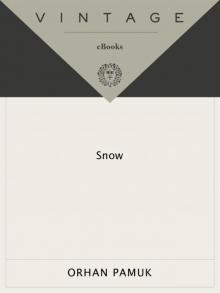 Snow
Snow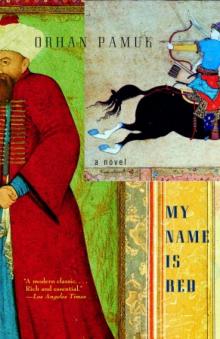 My Name is Red
My Name is Red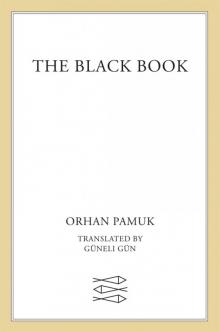 The Black Book
The Black Book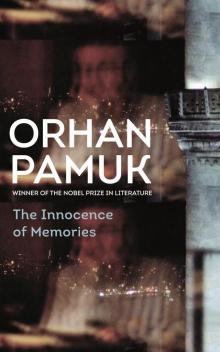 The Innocence of Memories
The Innocence of Memories The White Castle
The White Castle Other Colors
Other Colors Silent House
Silent House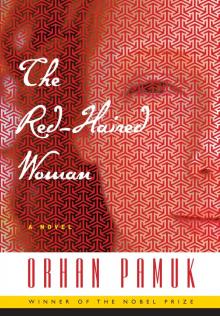 The Red-Haired Woman
The Red-Haired Woman The Museum of Innocence
The Museum of Innocence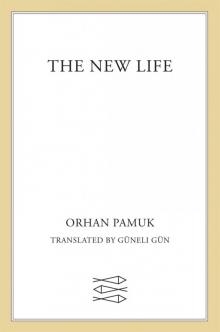 The New Life
The New Life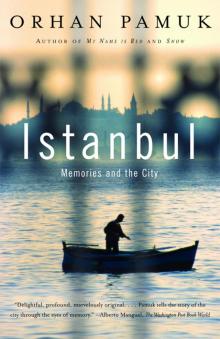 Istanbul
Istanbul